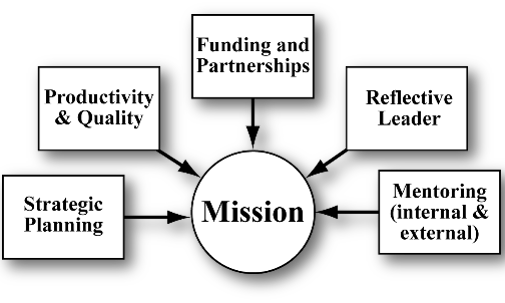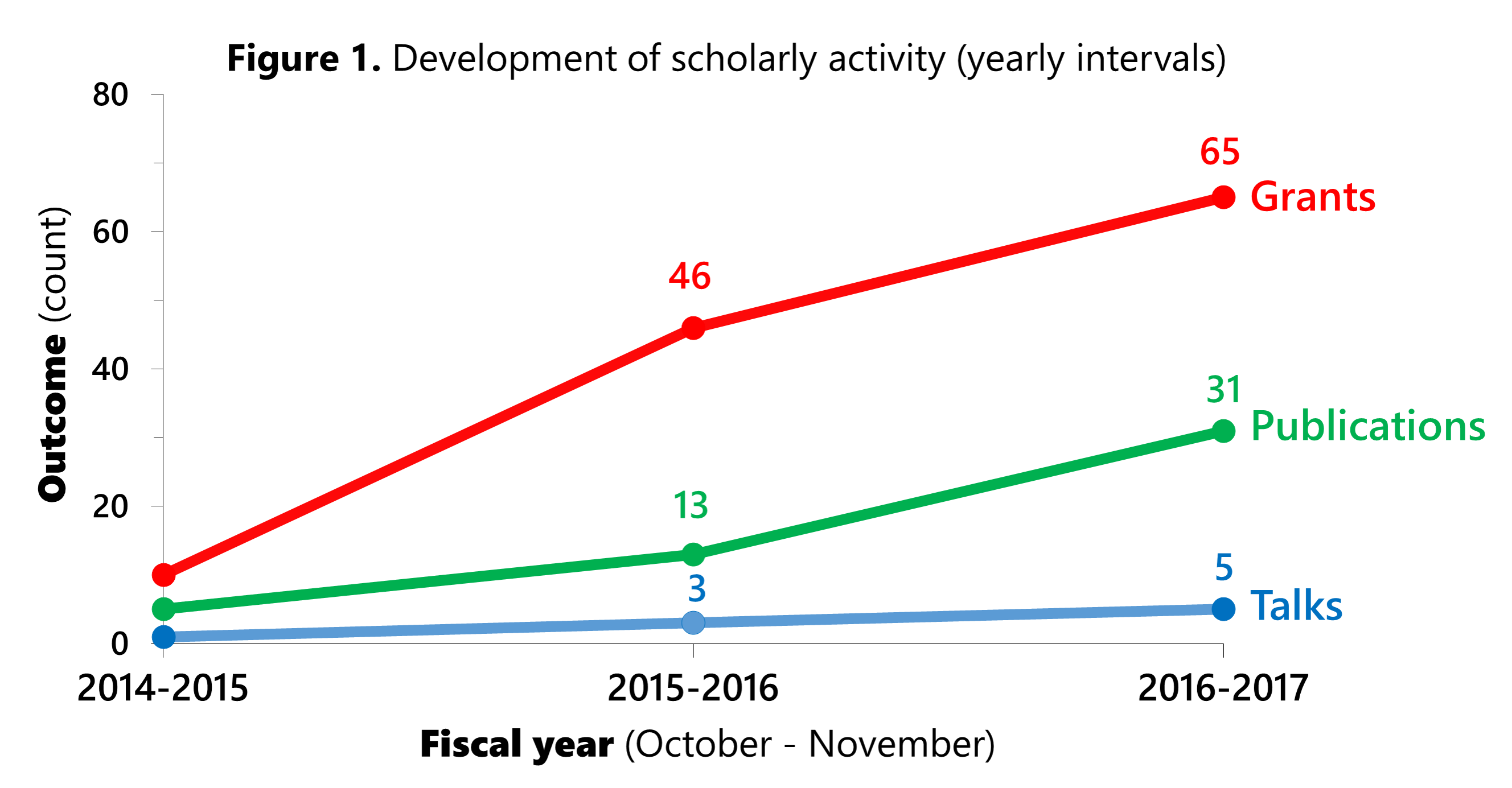I have enjoyed many leadership positions throughout my career and believe that personal and professional relationships form the backbone of all sustainability and growth, and that a reflective focus on continuous improvement data informs good decision making.
LEADERSHIP MISSION.
My mission as a leader is to support staff and systems to achieve sustainable growth in services, funding, staff/faculty satisfaction, and strategic partnerships.
To acomplish this, I focus on a number of critical leadership effectiveness efforts including: strategic planning, productivity and quality, funding and partnerships, reflection, and mentoring.

PRODUCTIVITY AND QUALITY.
My persional service mission is to provide responsive, efficient, and high-quality analytical support. To accomplish this, I regularly collect detailed information about research activities. Analysis of these data typically invole the calculation of indicies that are helpful for assessment, for example:
- Proportion of staff involved in grant submissions
- Number of projects per staff and associated weight (workload) of each project
- Number of grants, publications, talks, posters, and other forms of dissemination
- Stakeholder and peer qualitative feedback
- Proportion of billable time per staff relative to the position
These indicies are calculated at the group-level to evaluate overall group progress and at the individual-level to allow for individual progress assessments in comparison with previous results and with the anonymous results of other staff members. I am interested in influence and visability metrics within the orgainzation, the dicipline, and healthcare system more broadly and use automated procedures for indicators of productivity and impact (e.g., citation metrics, journal impact factor, etc.) using R, Google Scholar and other tools.
Figure 1 illustrates the development of scholarly activity based on select group-level indicies across three years of leadership. As shown in Figure 1, the team supported 65 grant submissions during the final year (Oct. 2016 – Nov. 2017), an increase from 46 the previous year and 10 from my first year with the team (July to October 2015). Pre-award grant work required close resource management to ensure fiscal sustainability.  This substantial growth was accomplished in part by increases in efficiency due to experience and focused training, a developing library of grant templates and power analysis code, and increasing demand for this service. Also, we increased the percent of staff involved in grant submisions from 20% in 2014-2015 to 80% in 2016-2017 with 60% of staff included as co-investigators on at least one grant proposal during the last year.
This substantial growth was accomplished in part by increases in efficiency due to experience and focused training, a developing library of grant templates and power analysis code, and increasing demand for this service. Also, we increased the percent of staff involved in grant submisions from 20% in 2014-2015 to 80% in 2016-2017 with 60% of staff included as co-investigators on at least one grant proposal during the last year.
- Qualitative grant reviews described our grant methodology and analysis sections as: “innovative”, “clear”, “well-reasoned and appropriate”, “well thought out”, and “clearly indicated in the proposal, in a highly detailed, concise manner”. Similarly the principal investigators summerized our work as: “excellent”, “thoughtful”, “state-of-the-art”, and “perhaps the most thorough part of the grant”.
Published manuscripts also increased with staff co-authorship from 5 in 2014-2015 to 31 publications in 2016-2017 (see Figure 1). Many of these publications were in top tier journals (some with an impact factor > 5). During the last year, team-authored publications were cited a total of 783 times, with a median of 16.125 citations per staff member.
Overall, Figure 1 illustrates the coalescence of a new vision for team leadership within the organization that resulted in new funding, partnerships, and additional value offered by the team.